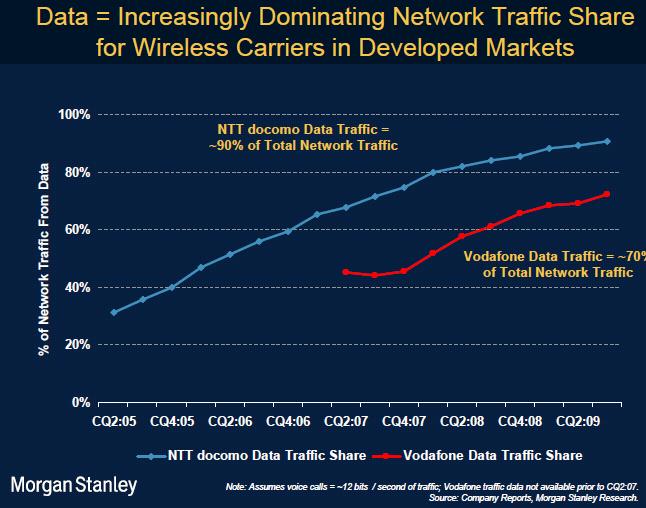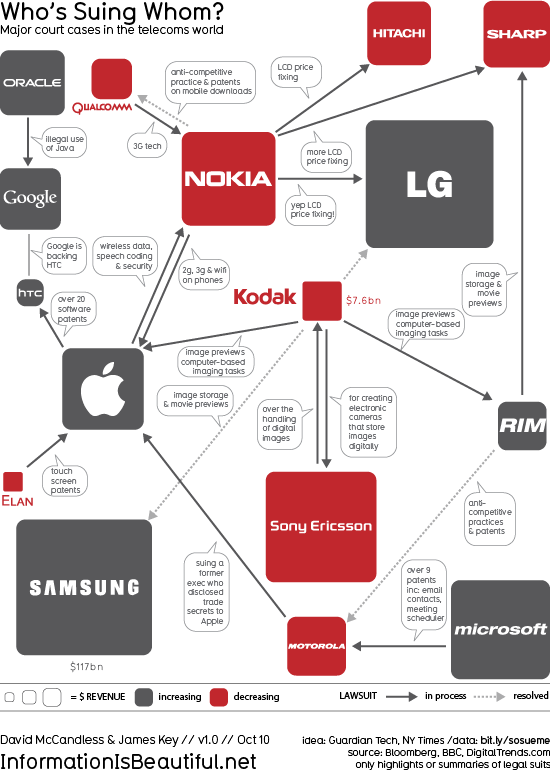AT&T and T-Mobile have collected their press release and associated documents on one web site. A few points caught my eye.
Archive for the ‘Business’ Category
AT&T and T-Mobile – Interpreting the Spin
Friday, March 25th, 2011Who’s Suing Whom?
Thursday, October 7th, 2010Experimental Radio Applications at the FCC
Thursday, June 3rd, 2010This summarizes a selection of applications for the Experimental Radio Service received by the FCC during May 2010. These are related to WiMAX, sensors, SAW devices, radio-location, ultra-wideband, white space, aircraft passenger communications, landslide monitoring, collision avoidance radar, mobile DTV, LTE, Inmarsat handsets, highway rock-fall monitoring, HF communications, spacecraft link characterization, and interference into broadband access.
- Polytechnic Institute of NYU filed an application (with supporting exhibit) for experimental license to conduct a network research project using WiMAX on 2535-2540 MHz. This is part of the nationwide Global Environment for Network Innovations (GENI) project, a suite of infrastructure that will support experimental research in network science and engineering. GENI is supported by the National Science Foundation and managed by the GENI Project Office at BBN Technologies.
- Mnemonics, Inc. filed an application (with supporting exhibits) for experimental license to operate in support of a research project that is to develop and demonstrate the viability of wirelessly extracting measured data from a network of passive surface acoustic wave (SAW) sensor devices. This sensing technique is said to have several advantages over existing sensors, including no wired connections needed to extract data, no power requirements, operation up to 1000 degrees C., and sensor cost in-quantity in the tens of cents each. Operation will be on 915 MHz.
Morgan Stanley Looks to Japan for US Internet, Mobile Trends
Wednesday, April 14th, 2010Internet analyst Mary Meeker has released her latest update on internet trends. This updates her report from December 2009.
In the update, Meeker and her colleagues report mobile internet usage ramping up faster than desktop usage with the number of mobile users exceeding desktop users in five years. Several times the report looks to Japan for leading indicators of mobile trends in the US. Mobile network traffic continues to shift from voice to data, with NTT DOCOMO now at 90% data. It cites Rakuten Ichiba as Japan’s leading electronic commerce company with 19% of its online revenue derived from mobile.
The report sees 3G is seen as key to the success of the mobile internet, but options such as Wi-Fi and Bluetooth are growing rapidly. Network traffic growth, driven by video, is expected to rise 39-times by 2014, for a compound annual growth rate of 108%.
The report documents the growth in social-networking applications. Facebook is now the top-downloaded iPhone/iTouch application.
In 2008, desktop internet revenue was dominated by advertising and electronic commerce paid by the vendor or advertiser. Also for 2008, and in contrast, mobile internet revenue was dominated by premium content revenue paid by the user.
At the end of the presentation, we see a comparison of the mobile internet revenue mix between Japan and the rest of the world. Mobile internet revenue is broken down into four categories: mobile advertising, mobile paid services, mobile online commerce, and mobile data access. The analysis shows that the rest-of-world percentage breakdown by category in 2008 is similar to Japan’s in 2000. The implication is that the rest-of-the-world should look at what Japan has been doing more recently, since the rest-of-the-world may trend toward that. What’s “that?” A higher share of mobile internet revenue from mobile advertising, mobile paid services, and mobile online commerce, and a lower share from mobile data access.

